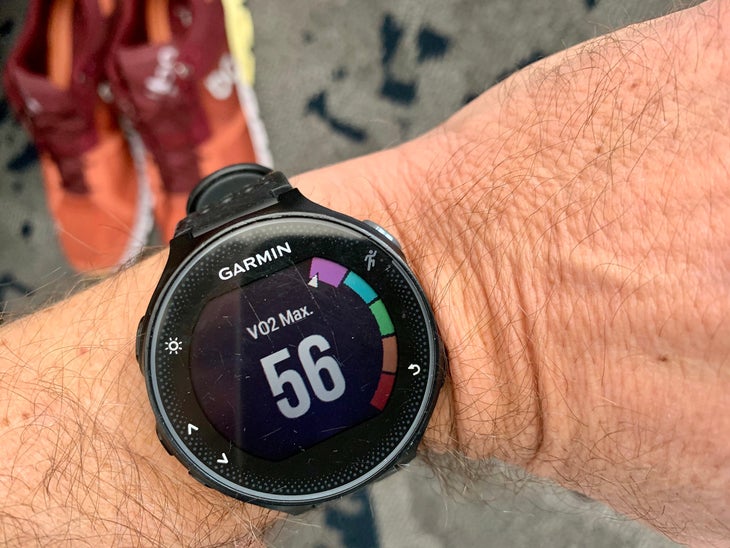QUESTION:
I hear a lot about VO2 Max in training plans and running articles. What does it mean?
ANSWER:
First, let’s look at the term itself. “V” stands for “volume.” “O2” stands for “oxygen.” And “max,” of course, means “maximum.” Put together and given context, VO2 max refers to the maximum volume (amount) of oxygen your body can consume in a minute.
At rest, you don’t use anywhere near your VO2 max. That’s because your aerobic energy demands are low. But as you begin exercising, your energy requirements increase. Your cardiovascular system transports more oxygen-rich blood to your capillaries, your muscle fibers extract more oxygen, and your mitochondria use that oxygen to create a greater supply of aerobic energy. But this process has an upper limit. Only so much oxygen can be transported, and only so much of the transported oxygen can be used to create energy. When your body reaches that limit, you’ve reached your VO2 max.
Most runners, depending on their fitness levels, reach their VO2 max at the fastest effort they can sustain for 5 to 7 laps on a track (2000 to 2800 meters). This means that any pace faster than VO2 max (e.g., pace you can sustain for 800 meters or a mile) will require more energy than you can produce aerobically. You’ll require an increased percentage of energy from anaerobic sources. On the other hand, any pace slower than VO2 max (e.g., a 10K or marathon pace) can be fueled almost exclusively from aerobic energy. In fact, marathons are 99 percent aerobic! This pace or velocity—vVO2 max—is an important and often used as one parameter in .
 VO2 max is measured in two ways:
VO2 max is measured in two ways:
Consumption based on body weight: Oxygen is measured in millimeters per kilogram per minute (mL/kg/min), with a kilogram equal to roughly 2.2 pounds. Three-time Tour de France winner Greg LeMond had a VO2 max of 92.5 mL/kg/min. An untrained 30-year-old male would have a VO2 max of about 35–45 mL/kg/min. This measure of VO2 max is the number usually estimated and reported by heart rate and fitness monitors.
Absolute rate of consumption: This is the total volume of oxygen consumed per minute. British rower Sir Mtthew Pinsent, who won four consecutive Olympic gold medals, recored a VO2 max of 7.5 liters per minute—more than any cyclists, runner, or cross-country skier in history—even as his VO2 max based on body weight was a meager 68 mL/kg/min. At more than 240 pounds, Pinsent needed that level of overall oxygen consumption to compete in endurance rowing. An average untrained male would consume about 3 liters per minute.
Training typically improves VO2 max in perviously untrained runners by about 20–25 percent, although the actual range can vary from negative improvements to well over 50 percent. In highly trained runners, VO2 max doesn’t change much with training—it’s already established. As an actual predictor of performance, VO2 max take a backseat to other factors, e.g., running economy, but it remains a valuable determinant of running potential.
—
is a running coach, world-class runner, and author. As a coach, Magill has led his masters’ clubs to 19 USATF National Masters Championships in cross country and road racing and has worked with athletes of all ages and abilities. He holds multiple American and world age-group records and is a 5-time USA Masters Cross Country Runner of the Year. Magill is author of SpeedRunner,��Build Your Running Body,��The Born Again Runner and the upcoming Fast 5K.


